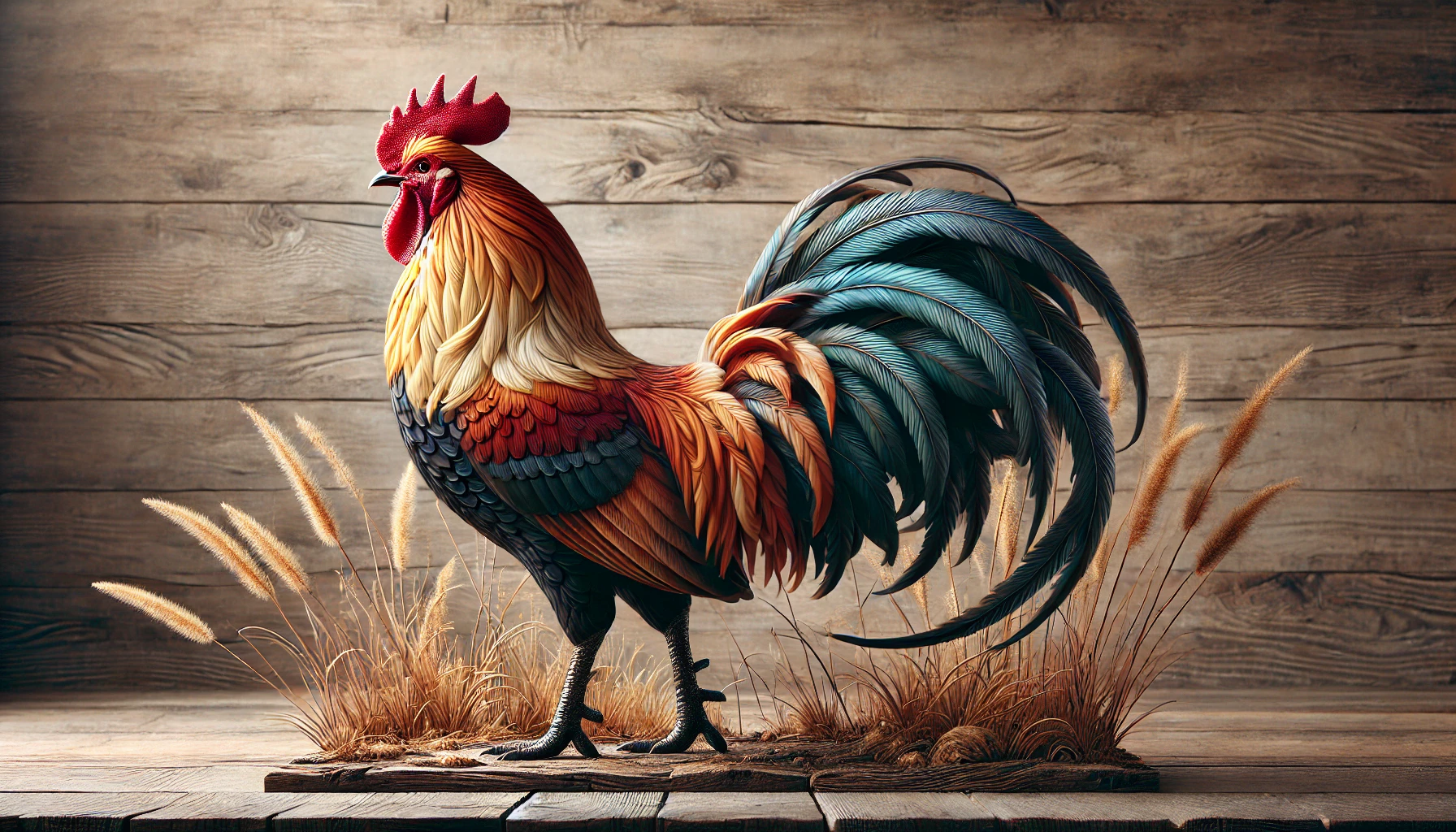
Unraveling the Rooster: The Intricate Feathers and Anatomy That Define a Flock Leader
Roosters, like all birds, have a fascinating and complex anatomy that is intricately designed for their survival and social roles within the flock. The feathers and overall anatomy of a rooster are vital for its protection, thermoregulation, communication, and display. Here's a detailed exploration of a rooster's feathers and anatomy.
Feathers
Feathers are one of the most distinctive features of birds, including roosters. They serve multiple purposes, from flight and insulation to mating displays and protection.
Types of Feathers
Contour Feathers:
Function: Contour feathers cover most of the rooster's body and provide a streamlined shape, helping with aerodynamics and protecting the bird from environmental factors like water and dust.
Structure: These feathers are made up of a central shaft (rachis) with barbs branching off. The barbs have smaller barbules that hook together, creating a smooth surface.
Flight Feathers:
Function: Although roosters are not strong fliers, their primary and secondary flight feathers help with balance and short bursts of flight, especially when escaping predators.
Structure: Located on the wings, these feathers are longer and more rigid than contour feathers, providing the necessary lift and control during flight.
Down Feathers:
Function: Down feathers are soft and fluffy, located beneath the contour feathers. They are crucial for insulation, keeping the rooster warm by trapping air close to the body.
Structure: These feathers have a short rachis and lack the interlocking barbules, making them very soft and efficient at trapping heat.
Tail Feathers:
Function: The long, decorative tail feathers (sickle feathers) of a rooster are primarily used for display during mating rituals and to establish dominance within the flock.
Structure: These feathers are longer and often more colorful and iridescent than other feathers, contributing to the rooster's distinctive appearance.
Hackle Feathers:
Function: Hackle feathers, located around the neck, are often used in displays of aggression or dominance. Roosters can raise these feathers to appear larger and more intimidating to rivals or predators.
Structure: These are narrow, pointed feathers that can be flared out during displays. They are usually more colorful and have a metallic sheen, which enhances their visual impact.
Saddle Feathers:
Function: Saddle feathers drape over the back and sides of a rooster and play a role in display and protection.
Structure: These feathers are elongated and flow down toward the tail, often with a softer texture compared to hackle feathers.
Anatomy
The anatomy of a rooster is specialized for its role as the protector and leader of the flock. Key anatomical features include:
Skeletal System
Skull:
The rooster's skull is lightweight but strong, designed to protect the brain and support the beak, which is used for feeding and defense.
Spine and Keel Bone:
The spine is flexible yet sturdy, allowing for a wide range of motion. The keel bone, an extension of the sternum, is crucial for the attachment of flight muscles, even in birds like roosters that primarily use their wings for short flights or balancing.
Legs and Spurs:
Roosters have strong, muscular legs that support their active lifestyle. The legs are covered in scales and are equipped with sharp spurs used for defense and establishing dominance.
Musculature
Flight Muscles:
Even though roosters are not known for long flights, they have well-developed flight muscles that allow for quick bursts of flight when necessary.
Leg Muscles:
The leg muscles are powerful and provide the strength needed for running, scratching the ground, and engaging in battles with other roosters.
Respiratory System
Air Sacs:
Roosters, like all birds, have an efficient respiratory system that includes air sacs, allowing for continuous oxygen supply during both inhalation and exhalation. This system supports their high-energy activities and vocalizations.
Syrinx:
The syrinx is the vocal organ of birds, located at the base of the trachea. In roosters, it is responsible for producing their loud, distinctive crowing, which serves as a territorial call and a signal to the flock.
Digestive System
Beak and Crop:
The beak is adapted for pecking and breaking down food, while the crop serves as a storage pouch where food can be softened before digestion.
Gizzard:
The gizzard is a muscular part of the stomach that grinds food, aided by ingested grit, allowing the rooster to digest hard materials like seeds and grains.
The feathers and anatomy of a rooster are finely tuned to support its survival, reproduction, and social role within the flock. From the intricate structure of its feathers to the powerful muscles and efficient respiratory system, every aspect of a rooster's body plays a vital role in its daily life. Understanding these features helps in appreciating the complexity of these birds and the importance of providing proper care to ensure their well-being.

